
Qormi, also known by its title Città Pinto, is a city in the Southern Region of Malta, southwest of Valletta in the centre of the island. It has a population of 16,324, making it Malta's fifth-largest city.
The Liceo M.A. Vassalli is situated in Tal-Ħandaq, Qormi (Malta) on the site of the former Royal Naval School Tal-Handaq (1947–1978). The Junior Lyceum was founded in 1981, and offers secondary education to male students aged 10 to 16. The school complex is characterized by Nissen huts and small blocks in a random layout. Having formerly been a barracks during World War II this layout intended to give the site resemblance with a Maltese village, in order to give camouflage from the air.
Tal-Ħandaq is an area in Qormi, Malta. It is a low hill, situated on the left side of Mdina Road in Qormi.
This page list topics related to Malta.
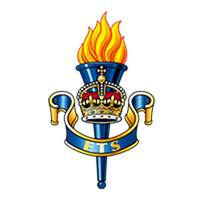
The Educational and Training Services form part of the Adjutant General's Corps and have done since 1992 when this Corps of the British Army was formed. Their remit is to continue the general education of soldiers and officers alike, as well as the actual military training of the soldiers of the Army.
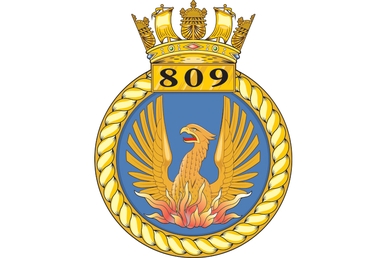
809 Naval Air Squadron is a squadron of the Fleet Air Arm of the United Kingdom. It was first formed in 1941 and flew in the Soviet Union, the Mediterranean and the Far East during the Second World War.In Jan 54 the sqdn equipt with Sea Hornet NF21s joined HMS Eagle enroute to the Med, however when an a/c was lost over the ships side the sqdn was put ashore in Gibraltar to operate from North Front airfield, the sqdn personnel were embarked on another carrier on way back to the UK the a/c having flown back to UK at this time. The sqdn was disbanded at Culdrose and moved to Yeovilton and took delivery of Venom 20s later updated to 21s, in Nov 55 moved to Malta operating from RAF Takali as Halfar was undergoing runway refurbishment. After active service during the Suez Crisis, 809 was disbanded in 1959. Reformed in 1963 to fly Blackburn Buccaneers, the squadron was disbanded briefly in 1965-66, and then again in 1978. A brief period during the Falklands War saw 809 reformed to bring Sea Harrier FRS.1 aircraft south to the UK task group and to fly from HMS Illustrious.

Service Children's Education (SCE) is an organisation of the United Kingdom government responsible for the education of the children of British Armed Forces families and Ministry of Defence (MoD) personnel serving outside of the United Kingdom. They provide schools and educational support services from Foundation Stage through to sixth form. They are headquartered at Trenchard Lines, Upavon, Wiltshire.
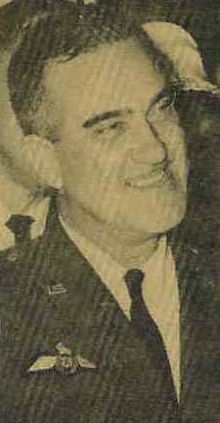
Brigadier General Alberto A. Nido is a former United States Air Force officer who during World War II served in the Royal Canadian Air Force, the British Royal Air Force and in the United States Army Air Forces. He was also the co-founder of the Puerto Rico Air National Guard.
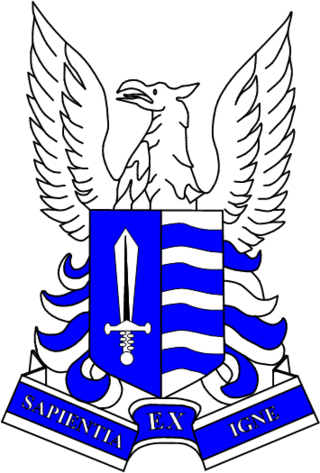
Prince Rupert School was a secondary school in Rinteln, Lower Saxony, Germany, and was operated by the Service Children's Education for children of military personnel and its employees of the former British sector of West Germany. Over the years it has taken both day and weekly boarding pupils from the military garrisons of Buckeburg, Detmold, Hameln, Herford, Hohne, Nienburg, Bunde, Hanover, Hildesheim, Minden, Osnabrück, Paderborn, and Rinteln. It was originally located at the North Sea port city of Wilhelmshaven before moving to its present location. After the school was closed, it served as a camp for refugees. Now the buildings are set to be demolished and replaced by a residential area.

The Naval Education Service was a branch of the British Royal Navy which both provided education for naval personnel and ran schools for children of Royal Navy personnel.

Kay Carberry, is the former Assistant General Secretary of the British Trades Union Congress (TUC).
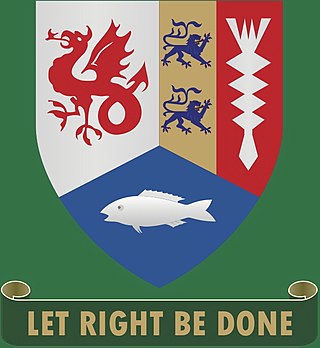
King Alfred School, Plön, was a boarding school for children whose parents were British military or civil service personnel working in Germany; between 1948 and 1959, it educated approximately 4000 pupils aged between 11 and 18 years old.
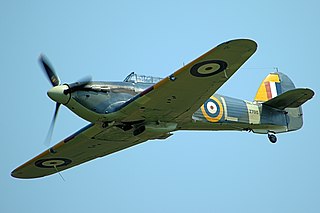
760 Naval Air Squadron is a Naval Air Squadron of the Royal Navy's Fleet Air Arm. The squadron first formed on 1 April 1940 as No.1 Fleet Fighter Pool with a variety of aircraft types before standardising in 1941 on the Sea Hurricane. In this role it disbanded on 31 December 1942. In May 1944 760 NAS briefly reformed as an Anti-Submarine Operational Training Squadron before disbanding into 766 Naval Air Squadron in November. Reformed again as part of No.1 Naval Air Fighter School in April 1945 it converted fighter pilots to the Corsair and then the Seafire until 23 January 1946 when it disbanded.

764 Naval Air Squadron was a Naval Air Squadron of the Royal Navy's Fleet Air Arm. It initially formed in April 1940, at RNAS Lee-on-Solent, as an Advance Seaplane training Squadron. The Squadron moved to RAF Pembroke Dock in July 1940, and later to RNAS Lawrenny Ferry, in October 1941 and remaining there until the Squadron disbanded in November 1943. It reformed at RNAS Gosport, in February 1944, as the User Trials Unit, however, the Squadron was decommissioned for the second time in September 1945. 764 NAS reformed again, at RNAS Lossiemouth, in May 1953, where it became an Advanced Training Unit. It moved to RNAS Yeovilton in September 1953, where it received its first jet aircraft. In November 1954 the Squadron disbanded.

765 Naval Air Squadron was a Naval Air Squadron of the Royal Navy's Fleet Air Arm. It formed at RNAS Lee-on-Solent, in May 1939, as a Seaplane School and Pool squadron. The squadron moved to RNAS Sandbanks, in August 1940, where it undertook the Seaplane Flying Training Course Part I. Lieutenant Commander Wilson was appointed as dual officer in charge of the air base, and Commanding officer of 765 NAS. By the middle of 1943, dedicated Seaplane Training schools ended and the squadron disbanded in the October. 765 NAS reformed at RNAS Charlton Horethorne, in early February 1944, as a Travelling Recording Unit. The squadron moved to RNAS Lee-on-Solent in March, before moving to RNAS Worthy Down on one month later during April, then in May it moved to RNAS Stretton, were it remained during June.

766 Naval Air Squadron was a Naval Air Squadron of the Royal Navy's Fleet Air Arm. It was to have initially formed in 1939 at RNAS Lee-on-Solent, as a Seaplane School, however, it formed at RNAS Machrihannish as a Night ALT Course, in 1942. It moved to RNAS Inskip, in 1943, to become part of No. 1 Naval Operational Training Unit. By 1944, it was operating over 30 swordfish aircraft, but, during the year, also acquired Firefly aircraft from 1772 NAS, and Sea Hurricane aircraft from 760 NAS. It moved to RNAS Rattray early in 1946, but later that year, moved to RNAS Lossiemouth where it received Seafire aircraft, along with being Part 1 of the Operational Flying School. By late 1951, Sea Fury trainer aircraft were also added to its varied list of types operated. In 1953, the squadron moved to RNAS Culdrose, where it disbanded in 1954.

767 Naval Air Squadron was a Naval Air Squadron of the Royal Navy's Fleet Air Arm. It was initially formed as a Deck Landing Squadron in 1939, when 811 Naval Air Squadron was renumbered 767 NAS, at RNAS Donibristle. A detachment went to Hyeres de la Palyvestre in the south of France, enabling training in fairer conditions. While here, the squadron took on an operational mission, with a bombing attack on the Italian port of Genoa. With the fall of France the squadron evacuated to Algeria, where it split. Part went to Malta, forming 830 Naval Air Squadron, the other part to HMS Ark Royal, with personnel returning to the UK via Gibraltar. The squadron regrouped at RNAS Arbroath and moved to the Deck Landing School at RNAS East Haven in 1943.

St Andrews's School was a primary school located within the British Army garrison at Pembroke on the island of Malta. The school opened in 1908 as part of St Andrew's barracks an integrated garrison development at Pembroke It would serve as a primary school for army and families based in the Pembroke Garrison, closing in 1978 as the UK drew down its forces on Malta. After 70 years of educational activity at the site the school buildings and grounds were handed over to the Maltese Government.
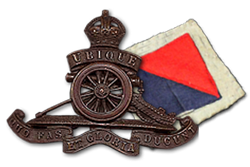
7th Heavy Anti-Aircraft Regiment, Royal Artillery was an air defence unit of the British Army that served in the Siege of Malta during World War II. It fired the first British shots in the Mediterranean Theatre in the war, and provided the basis on which the heavy anti-aircraft defences of Malta were built. Late in the war it returned to defend the UK against V-1 flying bombs, and continued in the postwar army until 1954.
























